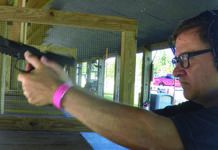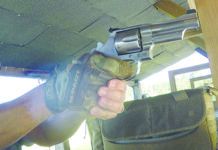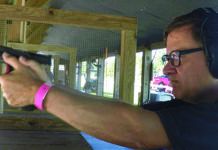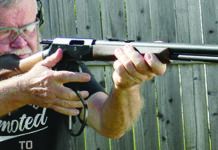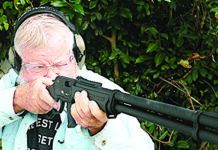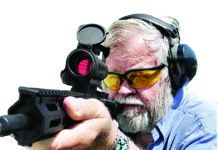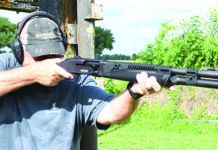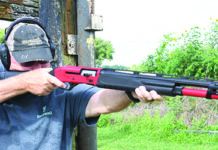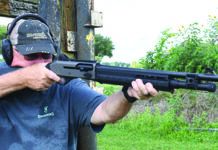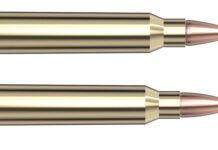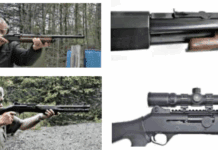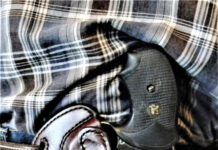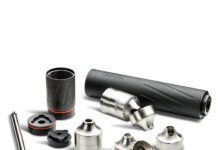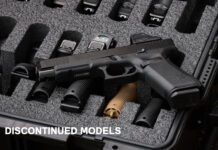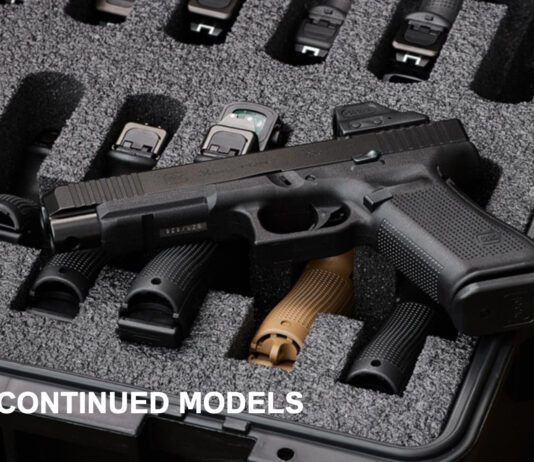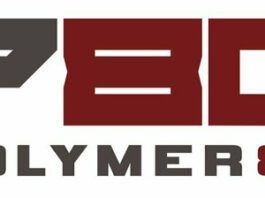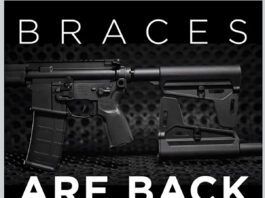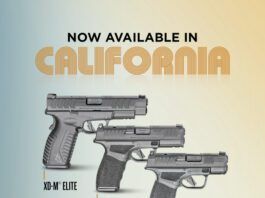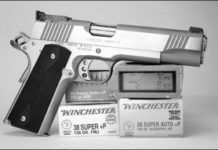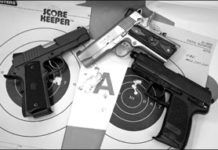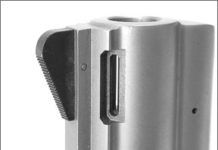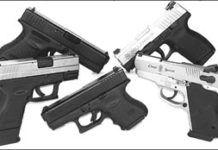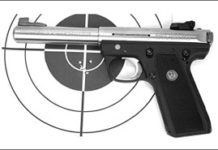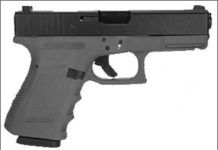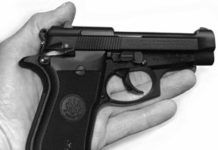Lone Wolf Distributors Custom Glock Slides
Winchester Wins FBI 40 S&W Ammunition Contract
Arizona G&FC Meeting Discusses Spent Ammo
Colt Melby Retires from S&W Board of Directors
Cartridge and Gun Tandems In .357 Sig, .38 Super, .40 S&W
Three Winners in .45 ACP: H&K, Springfield, and Para Ordnance
The term "single-stack" is a popular nickname for the Browning 1911 pistol that feeds from a magazine, wherein the loaded rounds are stored directly one on top of the other. This vertical column is one of the elements that give the 1911 its narrow grip profile, a key element for stealth carry and a natural index. The flat grip provides instant feedback, telling the operator where the gun is pointing. The 1911 has been chambered for other cartridges, but the .45 ACP is by far the most popular choice. In this test we will evaluate three single-stack 45s that differ significantly from each other and in varying degrees from the original Browning design.
Of our three test guns, the $1011 Springfield Armory Loaded Champion Stainless Steel PX9142LP was the closest to the original 1911 design. But it operated with a plunger-type recoil system that, according to Dave Skinner of STI, was adapted from the patent that was used in the tiny Seecamp pistols. (Our first experience with this recoil system was our test of the STI VIP pistol in the March 2003 issue.)
The Para Ordnance Tac S DCX745E, $969, was designed in response to the perception that double-action pistols are safer than cocked-and-locked single actions. The Tac S featured the Para Ordnance LDA (light double action) trigger but still offered the advantages of 1911-style ergonomics, including a thumb-operated safety. Both the Springfield Armory and Para Ordnance pistols featured all-steel construction.
Our third gun was the Heckler & Koch USP Compact Tactical, $1179. This is an upgraded version of the $919 USP Compact that is now available to civilian as well as law enforcement personnel. Also referred to as the USP45CT, this gun may be carried as a traditional double-action pistol, wherein the first shot is double action, and subsequent shots are single action, or it can be carried cocked and locked for single-action operation. The HK USP45CT pistol was the only gun shipped with an eight-round magazine.
Porting Earns an A for Better Control of Pistols and Revolvers
Updates: S&W 22A-1 .22 Pistol; Guerinis Maxum 12 Gauge O/U
We've recently had a chance to shoot two guns one .22 LR pistol and a pricey over-under 12 gauge against guns we've already tested.
In the January 2007 issue, we reviewed Ruger's 22/45 Mark III KP512MKIII .22 LR, $398, and Browning's Buck Mark FLD Plus Rosewood UDX 051429490 .22LR, $417. Since then, we had a chance to shoot the Smith & Wesson 22A-1 107431 .22 LR, $427. Each of these guns featured a 5.5-inch heavy barrel. We shot the 22A-1 head to head against those other guns still in our inventory, and we wanted to update Gun Tests readers on how the third gun fit into the picture.
Likewise, we tested two midrange-price sporting-clays over/unders in the November 2006 issue: the Blaser F3 Competition Sporting, $5195; and Beretta's 687 EL Gold Pigeon II Sporting No. J687526, $5495. Against the two original test guns we pitted the Caesar Guerini Maxum Sporting, $4950, to see how it stood up.
Here's what we found:
Big-Bore Sub-Compacts: We Test a Quintet of Good Guns
Heavy-Barrel .22 LR Pistols: Buy Brownings Buck Mark UDX
Best Tested Firearms: Pistols
A Trio of Pocket .380 ACPs: Steer Clear of NAAs Guardian
Whether or not the .380 ACP cartridge is your cup of tea, it exists in large numbers of available handguns today. Some of today's most modern ammunition make this cartridge a better one than it was, say, 30 years ago, but we would still not consider it for a main defensive weapon because we feel there are better caliber choices. Even the .45 ACP can be had in small packages.
We decided to look at a few of the .380 pocket pistols available, never mind the relative worth of the cartridge. After all, in a life-threatening situation any firearm is better than none, and a small, pocket-size gun is often more likely to be carried than anything bigger. We got a PPK Walther ($543), now being made in this smaller configuration by Smith & Wesson. The tiny North American Arms Guardian ($449) was the choice of one of our testers, despite the gun's being DAO. And the somewhat larger Beretta 85 FS Cheetah ($575) was also put up for consideration. Do these little .380s kick? How accurate are they? How easy are they to shoot fast? In this evaluation we looked hard at each gun's ability to make fast and reasonably accurate hits, but as always, we shot ‘em for group.
We tested with two types of hardball, CCI's Blazer and Brazilian Magtech, both with reloadable brass cases. We also used Cor-Bon's 90-grain JHP loads. We also tried a few groups with Federal's Personal Defense Hydra-Shok 90-grain JHP and Miwall's 88-grain JHP but didn't include these in the official results.
For the rapid-fire evaluations, we began with the gun in hand, and from a range of seven yards, brought the gun up and placed a shot onto a sheet of paper 8.5 by 11 inches in size. This was repeated until we got a good feel for each pistol, shooting each gun in the double-action mode. Then we tried each gun with two fast shots, which meant the Walther and Beretta were fired DA/SA, but of course the NAA Guardian was DA for both shots. We used these tests as a simple but practical evaluation of each gun's "combat" potential. We recommend the reader do similar testing if he buys such a gun with self defense in mind. Here's what we found.



